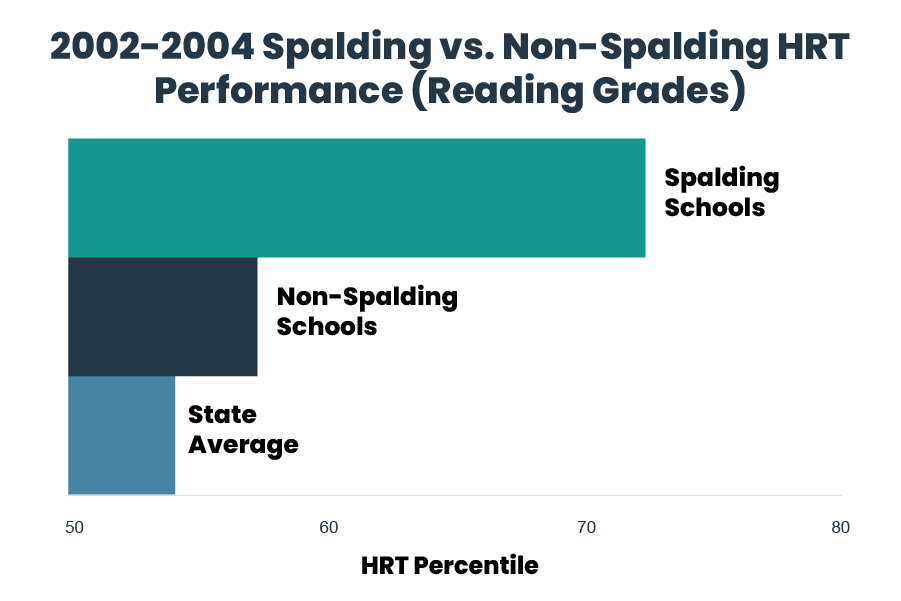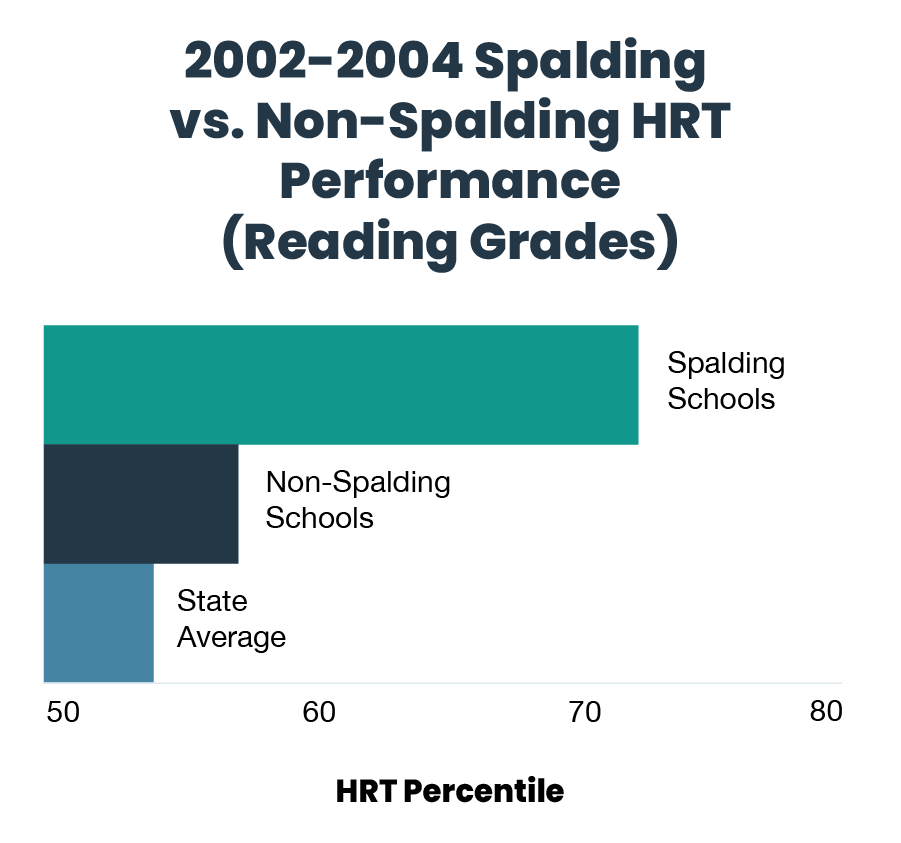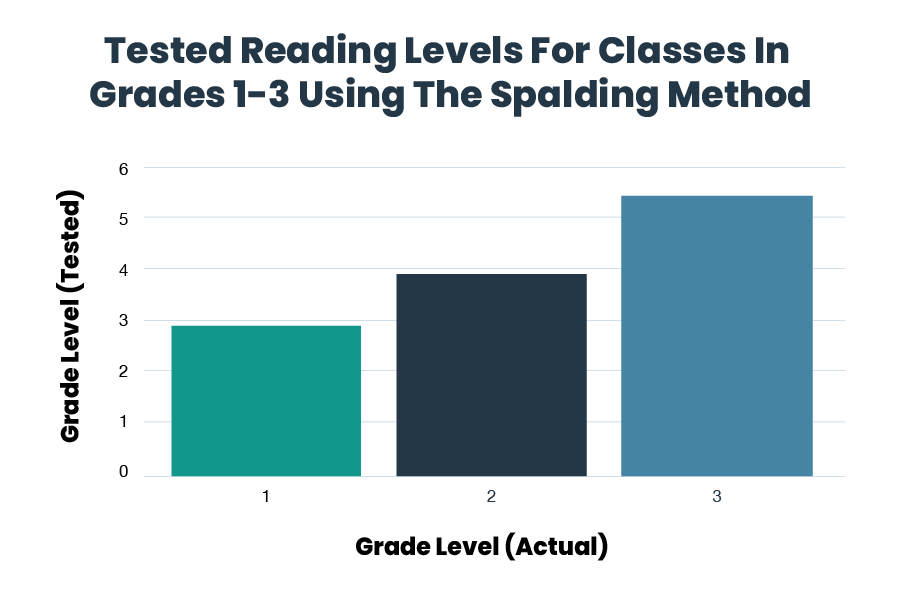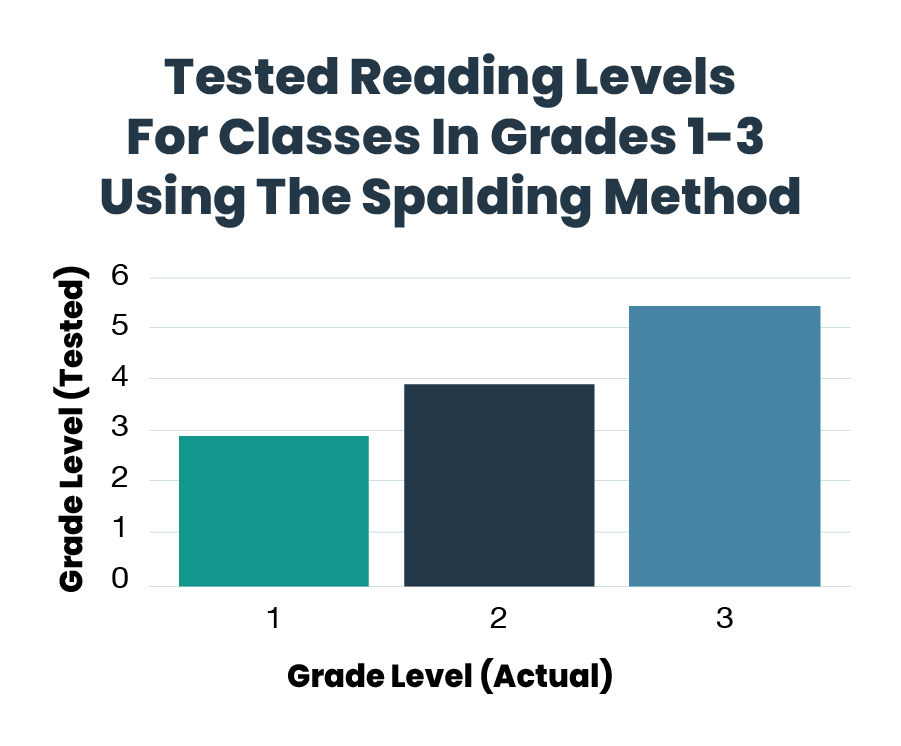Documented Results Using THE SPALDING METHOD®
Study:
Each year, language arts performance at Spalding schools is compared with national, state, and district averages where The Writing Road to Reading is used as a primary reading program.
Results:
During the 2002-04 academic years, Spalding Schools outperformed local district and state scores by significant margins (roughly 16 percentile points or approximately 30% better than their local district counterparts). Three Spalding Schools were the top performing of the state’s 1130 public and charter schools.


Study:
In his text Approaches to Beginning Reading (1984), Dr. Robert Aukerman validated THE SPALDING METHOD®. He investigated and described over 100 different approaches to beginning reading. Aukerman devoted ten pages to THE SPALDING METHOD®, citing national test scores from Spalding schools in twelve states.
Results:
The average grade level score of the 13 first grades in his sample was 2.95; of the 14 second grades, 3.99; and of the 10 third grades 5.41.


Study:
Two longitudinal studies involving THE SPALDING METHOD® were reported in Clinical Studies of Multi-sensory Structured Language Education for Students with Dyslexia and Related Disorders.
Results:
In both studies, statistical analysis of pre- and post- achievement test scores demonstrated significant improvements in word recognition, passage comprehension, and spelling.
Convincing evidence was found that, with appropriate instruction, literacy skills of most special education students can be improved even in high school (Hoerl and Koons 1995).
Study:
The Peoria (AZ) Unified School District, which in the early 1980s was experiencing standardized achievement test scores at or below 50 percentile rank, designed a pilot study to compare the effectiveness of THE SPALDING METHOD® with the district’s adopted program.
Results:
By the end of the 1985-86 pilot year, Peoria Spalding class percentile rank scores for reading comprehension ranged from the upper 80s to the high 90s on the state-adopted norm-reference high stakes test (ITBS).
Scores for the other classes remained at or below 50 percentile rank.
Study:
The Tucson Citizen reported that a majority of the students at The Gallego School in Tucson, Arizona could not speak, write, or read English at the beginning of first grade. The Spalding program was organized there by court order after a group of parents requested the implementation of a phonics-based program to help their children learn to speak and read English.
Results:
After five months of Spalding instruction during the program’s inception year, first grade students were reading at the 3.9 grade level. Grade 3 reading proficiency in this predominantly disadvantaged school continues to be observed in the 80-85 percentile range as measured on the Arizona Instrument to Measure Standards (AIMS).
These studies demonstrate that THE SPALDING METHOD® is highly effective in promoting literacy skills among students of different ages and ability levels. In particular, Spalding Schools have consistently outperformed state and district averages in language arts performance, with several schools ranking as the top performers in their state. Moreover, studies have shown that THE SPALDING METHOD® is effective in improving literacy skills among students with dyslexia and other learning challenges, including those in disadvantaged schools.